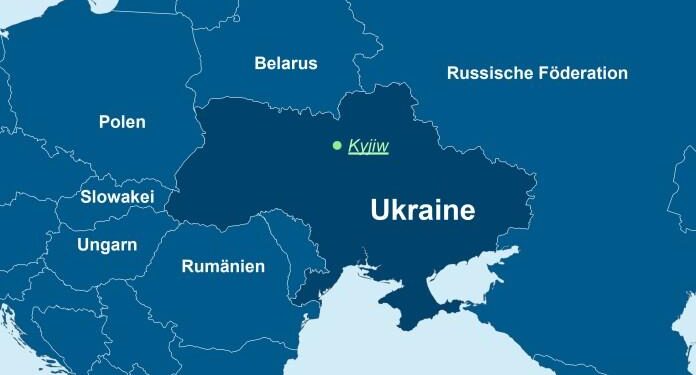As the conflict between Ukraine and Russia continues to dominate global headlines, discussions about potential pathways to peace are intensifying. Among the comparisons often drawn is Finland’s controversial 1944 peace settlement with Moscow, which some suggest Ukraine might emulate to end hostilities. However, experts warn that replicating Finland’s wartime compromise could have profound consequences for Ukraine’s sovereignty and security. This article explores why Ukraine should carefully consider alternatives to Finland’s 1944 approach before pursuing any peace agreements with Russia.
Finlands 1944 peace deal was a product of unique geopolitical conditions
Finland’s 1944 peace deal with Moscow was forged under an extraordinary confluence of factors that are unlikely to be replicated in the current Ukrainian context. The end of World War II found Finland in a precarious position: it was militarily exhausted, politically isolated, and backed by a Western bloc that was unwilling and unable to offer meaningful intervention. Crucially, Finland’s negotiated settlement maintained its sovereignty through careful geopolitical balancing – a tactic predicated on its relatively homogenous population, limited strategic ambitions, and a Soviet Union focused on ending the larger European conflict rather than advancing maximalist territorial demands.
Several critical elements distinguished the Finnish case from Ukraine’s present reality:
- Geographical buffer: Finland served as a buffer state rather than a frontline battleground with ongoing conflict.
- International neutrality: Post-war, Finland adopted a delicate neutrality, steering clear from alliances antagonistic to Moscow.
- The broader war context: The Soviet Union’s priorities in 1944 were shaped by total war exhaustion and imminent defeat by Western Allies.
Ukraine today faces a vastly different set of challenges, including active hostilities, deep internal divisions, and a geopolitical landscape marked by competing great power influences. These unique circumstances render any simplistic emulation of Finland’s 1944 peace framework not only ill-suited but potentially detrimental.
| Factor | Finland 1944 | Ukraine 2024 |
|---|---|---|
| Conflict Status | War winding down, Soviet focus elsewhere | Active war with Russian aggression ongoing |
| International Support | Minimal direct intervention | Strong Western political and military backing |
| Political Environment | Homogenous, stable government | Complex internal politics with divisions |
| Geopolitical Role | Buffer state | Key battleground in global power contest |
| Aspect | Finland 1944 | Ukraine 2024 |
|---|---|---|
| Conflict Nature | Defensive war | Territorial invasion |
| Global Alliances | Limited | Extensive |
| Negotiation Goals | Ceasefire, preserve sovereignty | Restore sovereignty, deter aggression |
| International Law Influence | Minimal | Substantial |
Strategic recommendations for Ukraine to pursue a durable and sovereign peace
To secure a durable and sovereign peace, Ukraine must avoid the pitfalls of replicating Finland’s 1944 peace strategy, which largely involved territorial concessions and a fragile armistice with Moscow. Instead, Kyiv should emphasize strengthening its defense capabilities and deepening international partnerships, particularly with NATO and the European Union, to ensure both military deterrence and political backing. Moreover, Ukraine’s diplomatic approach must focus on preserving its territorial integrity while promoting dialogue that prioritizes Ukrainian sovereignty-rejecting any forced compromises that could undermine long-term stability.
Strategic efforts should also encompass economic resilience and societal unity to withstand external pressures. Key recommendations include:
- Investing in modernizing critical infrastructure to secure supply chains amid ongoing conflict
- Enhancing cybersecurity to protect against hybrid warfare tactics
- Building broad domestic consensus on peace terms through transparent public engagement
- Leveraging international legal mechanisms to assert Ukraine’s rights and sovereignty
| Focus Area | Key Action | Expected Outcome |
|---|---|---|
| Military | Ramp up defensive aid and training | Improved deterrence & battlefield readiness |
| Diplomacy | Engage multilateral forums actively | Broader international support |
| Economy | Strengthen domestic industries & exports | Reduced vulnerability to sanctions |
| Society | Promote unity via inclusive dialogues | Stronger national cohesion |
Wrapping Up
In navigating its future relationship with Moscow, Ukraine faces complex choices that will shape its sovereignty and security for decades to come. While Finland’s 1944 peace with the Soviet Union offers historical insights, replicating that path may undermine Ukraine’s democratic aspirations and territorial integrity in today’s vastly different geopolitical landscape. As Kyiv considers its options, careful analysis and a clear-eyed understanding of both history and current realities will be essential to forging a sustainable and just peace.
















